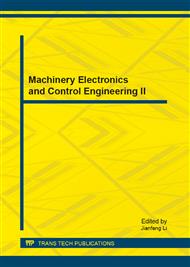p.86
p.89
p.93
p.98
p.103
p.108
p.112
p.117
p.121
Nano Colorful Cement Composite
Abstract:
The purpose of this study is to investigate the strength and mechanical properties of concrete by partial replacement of cement with nano-pigment particles. Nano-pigment particles with the average diameter of 120 nm were used with ten different contents of 0.5%, 0.1%, 1.5% and 4.0% by weight. have been investigated by scan electron microscopy(SEM) ,¬X-ray diffraction(XRD).The results showed that the use of nano- pigment particles up to maximum replacement level of 4.0% produces concrete with improved strength and mechanical properties The SEM study of the microstructures between the cement mortar mixed with the nano-pigment particles and the plain cement mortar showed that the nano-pigment particles as a partial replacement of cement up to 4 wt% could accelerate C–S–H gel formation as a result of the increased crystalline Ca(OH)2 amount at the early ages of hydration.
Info:
Periodical:
Pages:
103-107
Citation:
Online since:
March 2013
Authors:
Keywords:
Price:
Сopyright:
© 2013 Trans Tech Publications Ltd. All Rights Reserved
Share:
Citation:


